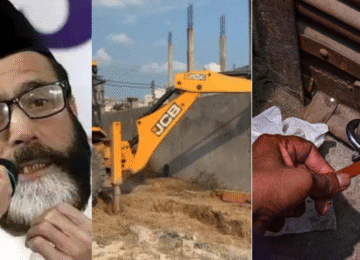Swachh Bharat Diwas 2025: Over 16 Crore Citizens Join Nationwide Cleanliness Drive
On October 2, 2025, India celebrated the Swachh Bharat Day, in which the culmination of the Cleanliness Hi Seva (SHS) 2025 campaign was marked. This year, this initiative saw unprecedented participation of more than 16 crore citizens, which outlines the country’s collective commitment to cleanliness and hygiene.
A nationwide movement
The SHS 2025 campaign, which began on 17 September 2025, was a collaborative effort between the Ministry of Housing and Urban Affairs (MOHUA) and the Department of Drinking Water and Sanitation (DDWS). The theme of the campaign, “a din, an hour, a sixty” (a day, one hour, together) encouraged citizens across the country to dedicate an hour to cleanliness activities on 2 October, aligning the anniversary of Mahatma Gandhi and Lal Bahadur Shastri with anniversary.
key achievements
- 14 lakh sanitation target units (CTU): Citizens actively participated in cleaning about 14 lakh CTU including public places, roads and community areas.
- 5 lakh public places were cleaned: more than 5 lakh public places, such as parks, markets and bus stands, urban and rural landscapes, were cleaned.
- 1.5 lakh cleaning Mitra security camp: The campaign also focused on the safety and dignity of cleanliness workers by organizing 1.5 lakh cleaning Mitra Suraksha camps across the country.
Community Engagement
The success of SHS 2025 was attributed to the active participation of various community groups:
- Students: More than 35,000 students from more than 70 schools in Navi Mumbai participated in workshops and sanitation activities, which promoted waste isolation and environmental awareness.
- Armed Forces: Maratha Light Infantry Regimental Center (MLIRC) organized a cleanliness drive in Belagavi, including about 550 personnel and more than 100 women from family welfare communities.
- Railways: East Coast Railway (ECOR) visited the day with floral tribute, Prabhat Feri (Morning procession), and Shramadan (voluntary labor), which reflects the values of Gandhi of sanitation and community service.
Technical integration
The campaign took advantage of technology to increase its reach:
- Digital platforms: Citizens were encouraged to share their participation on social media platforms using a hashtags like #NMMCSHS2025, making citizens, making the digital footprint of movement.
- AI-based content: Students created AI-related posters promoting cleanliness, which were shared online to spread awareness.
Government Initiatives
In line with the campaign’s objectives, the government introduced several initiatives:
- Swachh Shehar Jodi Programme: Launched to assist approximately 200 cities in effectively managing and processing municipal solid waste by pairing well-performing “mentor” cities with “mentee” cities.
- Swachh Survekshan: An annual cleanliness survey to assess and rank cities based on cleanliness parameters, encouraging healthy competition among urban centers.
Looking Ahead
The success of Swachh Bharat Diwas 2025 highlights the growing awareness and participation of citizens in maintaining cleanliness. The government’s continuous efforts, combined with community involvement, are pivotal in sustaining the momentum of the Swachh Bharat Mission.
As India moves forward, the focus will be on:
- Sustainable Waste Management: Emphasizing recycling, composting, and reduction of single-use plastics.
- Inclusive Participation: Ensuring that all sections of society, including marginalized communities, are actively involved in cleanliness initiatives.
- Infrastructure Development: Upgrading sanitation facilities and waste processing units to handle the growing urban population.
Conclusion
Swachh Bharat Diwas 2025 was not just a day of cleaning but a reflection of India’s collective will to create a cleaner, healthier, and more sustainable environment. The overwhelming participation of over 16 crore citizens serves as a testament to the nation’s commitment to the ideals of Mahatma Gandhi and the vision of a Swachh Bharat.













